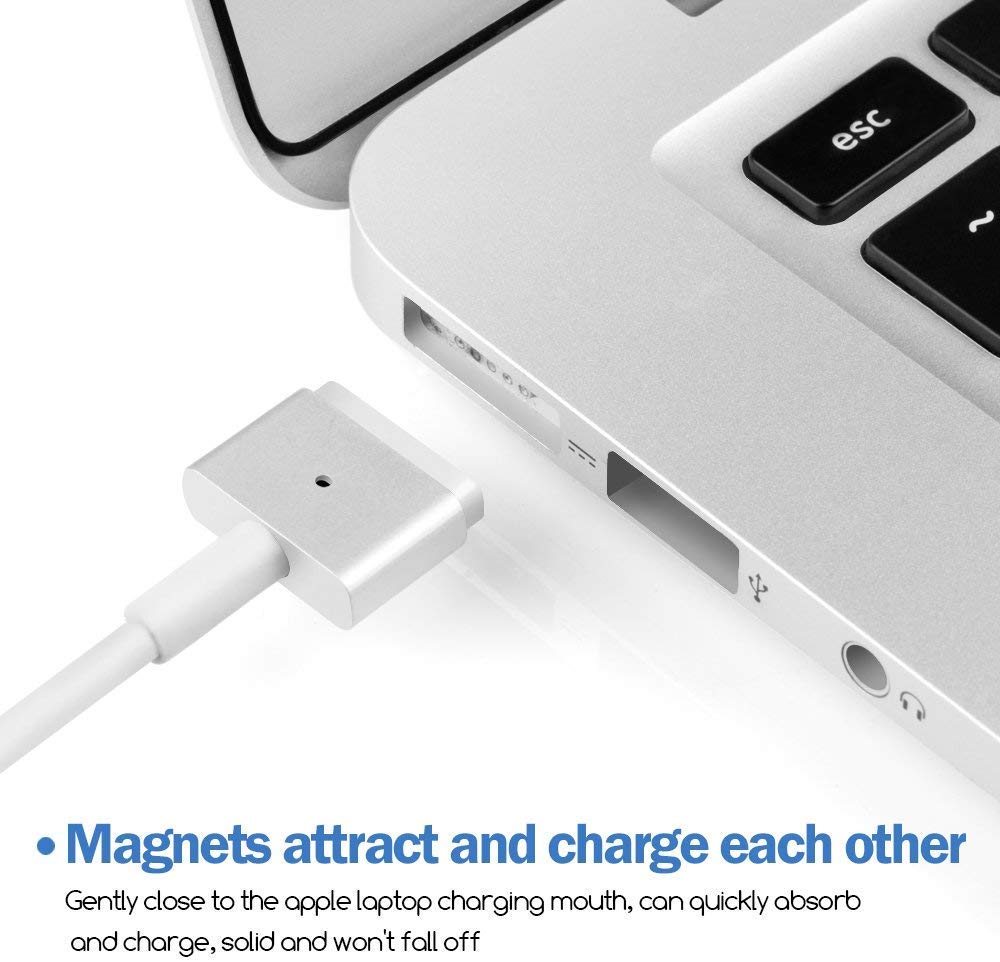
- #MACBOOK 2015 CHARGER 60W SERIAL#
- #MACBOOK 2015 CHARGER 60W MANUAL#
- #MACBOOK 2015 CHARGER 60W FULL#
- #MACBOOK 2015 CHARGER 60W PRO#
- #MACBOOK 2015 CHARGER 60W MAC#
If there isn't enough power for the machine, the load shedding kicks in and throttles the CPU (and perhaps GPU - I don't recall offhand).

Conversely, a fully charged battery will demand a zero charger load, and that's fine. If there isn't enough power left for the charger, the battery is by definition discharging unless it has no charge left. Thus, given an available input power, the machine load is satisfied first, and any leftover power is provided to the battery charger. The power management system also knows the electronic nameplate of the power supply and thus its rated power. The loads are prioritized: the machine has priority over the battery charger. The power management must maintain the following inequality balanced, in terms of power: (power adapter + battery as a power source) >= (battery charger + the machine). The battery as a power source is exclusive of the battery charger: a battery may operate as a power source, or the battery charger may operate, but never both at once. the machine (logic, drives, memory, screen, speakers, USB devices, etc.)īoth loads are adjustable and the power management's function is to adjust them as needed.The below explains why.Ī MacBook's power management works very simply: it maintains a balance of power between the power consumed by the loads and the power available from the sources. It will operate safely, but the CPU performance will be diminshed. The MacBook it's plugged into won't operate in a "brownout".
#MACBOOK 2015 CHARGER 60W FULL#
It will clearly run at full capacity for longer than a higher wattage adapter or even fail to keep up with the energy demands of a machine using more than 60w giving you a flat battery if you run a deficit of energy “while charging”. So no, a 60W adapter won't overheat when connected to a machine that needs an 85W adapter. This is a given for the systems to receive safety certifications. I will give some facts along with my reasoning.Īll MagSafe adapters, when plugged into a mechanically matching receptacle on a MacBook/MacBook Pro, are designed to run safely.
#MACBOOK 2015 CHARGER 60W PRO#

#MACBOOK 2015 CHARGER 60W MAC#
You can use any USB-C power adapter that supports the USB-C Power Delivery standard, but you’ll need a more powerful adapter to charge your Mac faster, especially if it’s a newer, larger model. If your MacBook doesn’t have a MagSafe connector, it just charges via USB-C. Here’s an overview of which style belongs to which device. MagSafe L is the longer, straighter connector attached next to the MacBook, while the T is the blocky square used on most MagSafe connectors. MageSafe 2 cables are split between MagSafe L and MagSafe T type connectors. These mainly fall into four main types: MagSafe, MagSafe 2, MagSafe 3, and the ones that only charge with a USB-C connection on the Mac side.

Chargers for older MacsĪs you can imagine, there have been quite a few combinations of chargers and machines in Apple’s recent history.
#MACBOOK 2015 CHARGER 60W MANUAL#
Read our Which Mac Do I Have? manual for instructions on determining your model. If your machine is older than any of the above, you should first determine the specific type before purchasing a charger.

#MACBOOK 2015 CHARGER 60W SERIAL#
Apple recommends that you contact Apple Support if you notice that your cable does not have a serial number, as you may be entitled to a replacement.


 0 kommentar(er)
0 kommentar(er)
